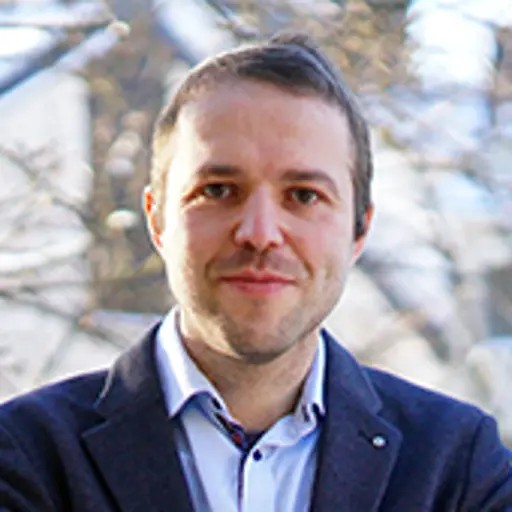Course syllabus adopted 2021-02-10 by Head of Programme (or corresponding).
Overview
- Swedish nameKvantmekanik
- CodeTIF290
- Credits4.5 Credits
- OwnerMPPHS
- Education cycleSecond-cycle
- Main field of studyEngineering Physics
- DepartmentPHYSICS
- GradingTH - Pass with distinction (5), Pass with credit (4), Pass (3), Fail
Course round 1
- Teaching language English
- Application code 85138
- Block schedule
- Open for exchange studentsYes
Credit distribution
Module | Sp1 | Sp2 | Sp3 | Sp4 | Summer | Not Sp | Examination dates |
|---|---|---|---|---|---|---|---|
| 0119 Examination 4.5 c Grading: TH | 4.5 c | 0 c | 0 c | 0 c | 0 c | 0 c |
|
In programmes
- MPCAS - COMPLEX ADAPTIVE SYSTEMS, MSC PROGR, Year 1 (compulsory elective)
- MPCAS - COMPLEX ADAPTIVE SYSTEMS, MSC PROGR, Year 2 (elective)
- MPPHS - PHYSICS, MSC PROGR, Year 1 (compulsory)
Examiner
 Richard Matthias Geilhufe
Richard Matthias Geilhufe- Assistant Professor, Condensed Matter and Materials Theory, Physics
Eligibility
General entry requirements for Master's level (second cycle)Applicants enrolled in a programme at Chalmers where the course is included in the study programme are exempted from fulfilling the requirements above.
Specific entry requirements
English 6 (or by other approved means with the equivalent proficiency level)Applicants enrolled in a programme at Chalmers where the course is included in the study programme are exempted from fulfilling the requirements above.
Course specific prerequisites
Introductory courses in: linear algebra, complex calculus, differential equations, analytical mechanics, electromagnetism, and quantum mechanics. Students should have completed an introductory course in quantum physics (e.g., FUF040 or equivalent).Aim
As a continuation of the introductory quantum mechanics courses, this course aims at providing the students with a firm, deeper knowledge of nonrelativistic quantum mechanics, at demonstrating the power of quantum mechanics to describe microscopic phenomena, and at introducing the students to its contemporary applications. This will give the students insight in the physics underlying modern technology and in experiments that cannot be explained with classical physics. In this way, the course will help preparing the students for courses in, for example, condensed matter physics, quantum field theory, spectroscopy, or quantum computing.Learning outcomes (after completion of the course the student should be able to)
- Explain the basic principles of quantum mechanics;
- Describe the dynamics of quantum-mechanical systems in the Schrödinger and Heisenberg pictures;
- Explain the correspondence principle and how classical mechanics relates to quantum mechanics;
- Use the WKB approximation;
- Apply scattering theory to calculate the cross section of quantum particles interacting with a potential, another particle, or a crystal;
- Describe how to model particles in a magnetic field and use this to explain the Zeeman and the Aharonov-Bohm effect and Landau levels;
- Understand the concept of the density operator and apply it to describe ensembles and open systems;
- Describe and explain second quantization and apply it to lattice vibrations (phonons) and the electromagnetic field (photons);
- Use the concepts developed in the course to describe the phenomena of spontaneous and stimulated emission and discuss their importance for lasers;
- Give an overview of cavity QED and its applications;
- Read scientific literature on the above topics.
Content
- Stern-Gerlach experiment; postulates; Dirac notation; noncommuting observables; representations
- Quantum dynamics: the Schrödinger and Heisenberg pictures; Feynman path integrals
- Correspondence principle; Ehrenfest's theorem
- WKB approximation
- Scattering theory: Lippmann-Schwinger equation; Born approximation; partial wave analysis; optical theorem
- Charged particles in a magnetic field; Zeeman effect; Landau levels; Aharonov-Bohm effect
- Second quantization; phonons; photons
- Density operator; pure and mixed states; ensembles and open systems
- Radiative transitions; spontaneous and stimulated emission; lasers
- Cavity QED: Jaynes-Cummings Hamiltonian; Rabi oscillations; Purcell effect; strong coupling
Organisation
The course will consist of lectures, problem-solving sessions, and guest lectures. Attendance at the guest lectures is compulsory.Literature
- Modern Quantum Mechanics, 2nd Edition or Revised Edition by J. J. Sakurai and J. Napolitano, Addison-Wesley (acquire this book before the course starts)- Lecture notes from Ben Simons' Advanced Quantum Mechanics course, University of Cambridge;
- Handouts provided by the lecturer
Examination including compulsory elements
Students will be examined by way of compulsory assignments to be handed in during the course and a compulsory oral exam at the end of the course. To receive any passing grade (3, 4, or 5), at least that grade must be earned both on the assignments and on the oral exam and the student must have participated in the guest lectures.The course examiner may assess individual students in other ways than what is stated above if there are special reasons for doing so, for example if a student has a decision from Chalmers on educational support due to disability.
The course syllabus contains changes
- Changes to course rounds:
- 2023-05-26: Examinator Examinator changed from Philippe Tassin (tassin) to Richard Matthias Geilhufe (geilhufe) by Viceprefekt
[Course round 1]
- 2023-05-26: Examinator Examinator changed from Philippe Tassin (tassin) to Richard Matthias Geilhufe (geilhufe) by Viceprefekt